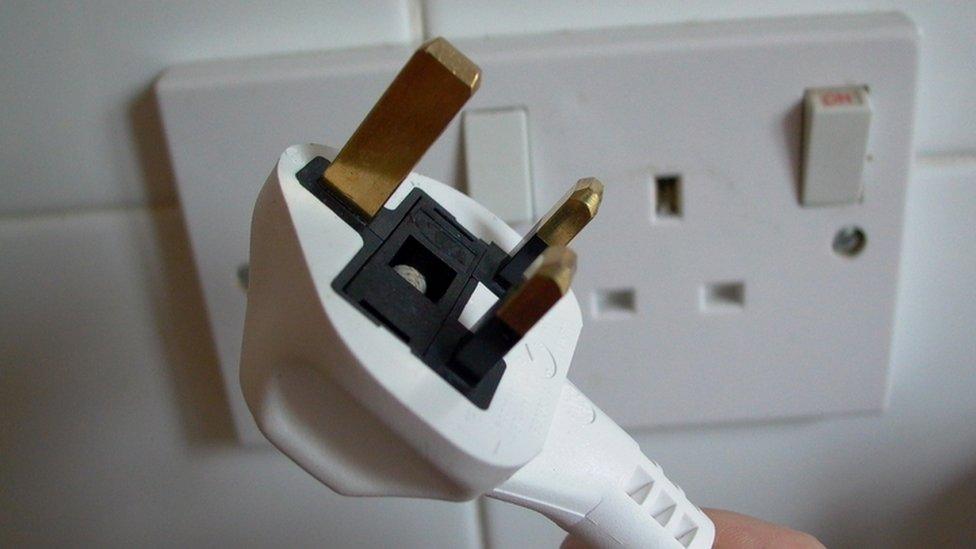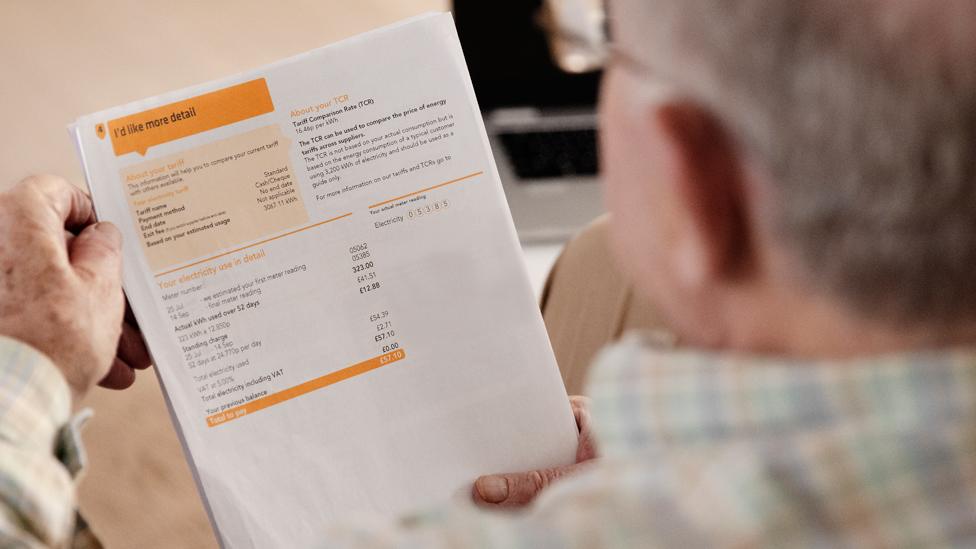Q&A: How does NI's energy market differ to the rest of the UK?
- Published

The UK's new Prime Minister, Liz Truss, has announced her plan to tackle the energy crisis.
The government has promised Northern Ireland households will get the same support with energy bills as the rest of the UK but it is not clear how that will be delivered.
That's because Northern Ireland has a separate energy market from the rest of the UK, with its own rules and regulator.
We are all acutely aware that there is a global energy price crisis, with warnings of further increases on the horizon.
The supply of gas from Russia to Europe being under threat, meant wholesale price jumped again last month.
There has been a 600% increase in wholesale gas between July 2021 and this year. It hit £3.52 per therm on Tuesday 26 July.
This is six times higher than on the same day in 2020.
That is still lower than the highest price we have seen this year - a record £4.95 in early March.
Wholesale costs make up about two thirds of your gas bill which is why suppliers have then increased their prices.

Gas prices have risen sharply
How much have energy prices in Northern Ireland risen in the last year?
Two thirds of homes in Northern Ireland use home heating oil.
The home heating oil market is not regulated as there are so many different suppliers - there is more competition.
Currently 500 litres (109.9 gallons) is costing £412.51 - that is 89% higher than the same time last year, when it would have cost £218.66, and 60% higher than pre-pandemic levels.
If we take each of the gas suppliers, SSE Airtricity for example which supplies the Greater Belfast area, an annual bill is 142% higher than April 2021 at £1,242.30.

The energy market in Northern Ireland is regulated by the Utility Regulator
Firmus Energy, which supplies towns across Northern Ireland, current average annual bills are 190% higher than April 2021 at £1,504.22.
Power NI which is the largest electricity supplier in Northern Ireland, the average annual bill in July 2022 was £944, that is 55% higher than in April 2021 when it was £610.
Who regulates how much energy companies can charge in Northern Ireland?
The energy market in Northern Ireland is regulated by the Utility Regulator.
It regulates the prices of three suppliers - two gas companies (SSE Airtricity and Firmus) and one electricity provider Power NI.
It also cap their profits at 2% for gas suppliers and 2.2% for Power NI.
How are energy prices regulated in England, Scotland and Wales?
It is called the energy price cap - it basically means there is a maximum amount that suppliers can charge customers for each unit of energy.
It was designed to protect consumers from price volatility.
Until recently, it was reviewed twice a year.
It is now going to be reviewed every three months to try and prevent suppliers from going bust.
Many suppliers have been in financial distress as they have to absorb the increasing cost as they can't raise prices, but when they go bust, it is consumers who ultimately foot the bill.
How do the differences in regulation affect how much we pay in Northern Ireland?
In Northern Ireland, suppliers can announce price increases as and when they need to, as long as it is approved by the Utility Regulator, who scrutinises their costs.
It means that while we have more frequent announcements, they are more gradual increases than those seen in the rest of the UK, where typically there are two massive hikes.

If we take a look at the regulated electricity price in Northern Ireland, it is lower than in the rest of the UK.
Whereas, gas prices are a bit different, it depends what supplier you are with.
The average bill in Greater Belfast area is lower than Great Britain, but the average Firmus bill is slightly higher.
Our system of regulation is more sensitive to change, that can be a good thing or a bad thing.
While we get increases passed on to us more quickly, our system means when prices come down we are likely to feel that more quickly too.
And when can we expect the next slate of increases?
In England, Scotland and Wales the next increase is due in October.
Northern Ireland's system means we do not know when the next price rises will be, but we do know the regulator previously said that any further market volatility would translate into higher prices for consumers.
If some of the anticipated increases in GB are announced in October, then that would make average bills substantially higher in the rest of the UK compared to how things currently stand in Northern Ireland.
But we do not know when or how much prices here could go up in the meantime.
Related topics
- Published9 August 2022

- Published11 August 2022

- Published10 August 2022
